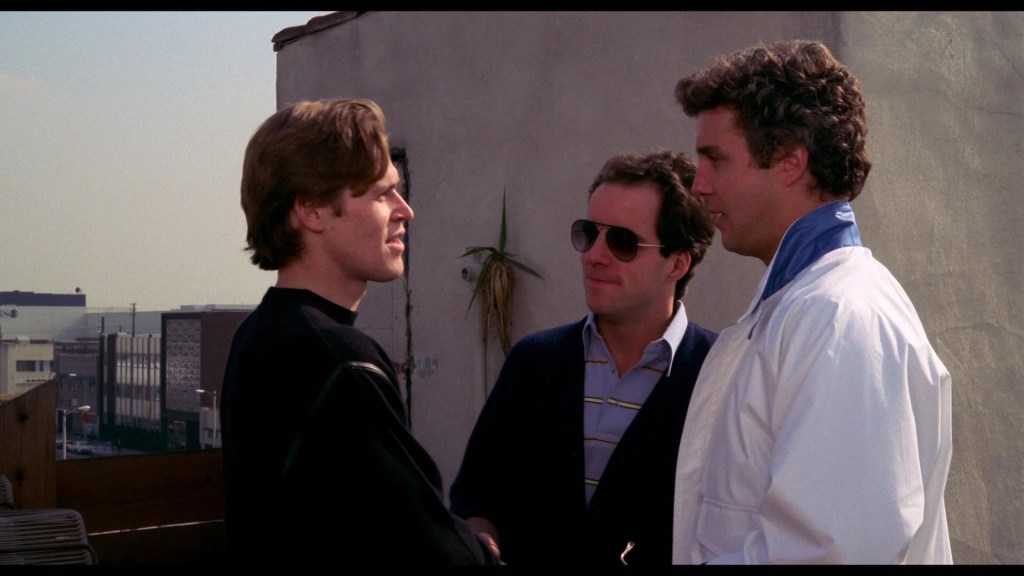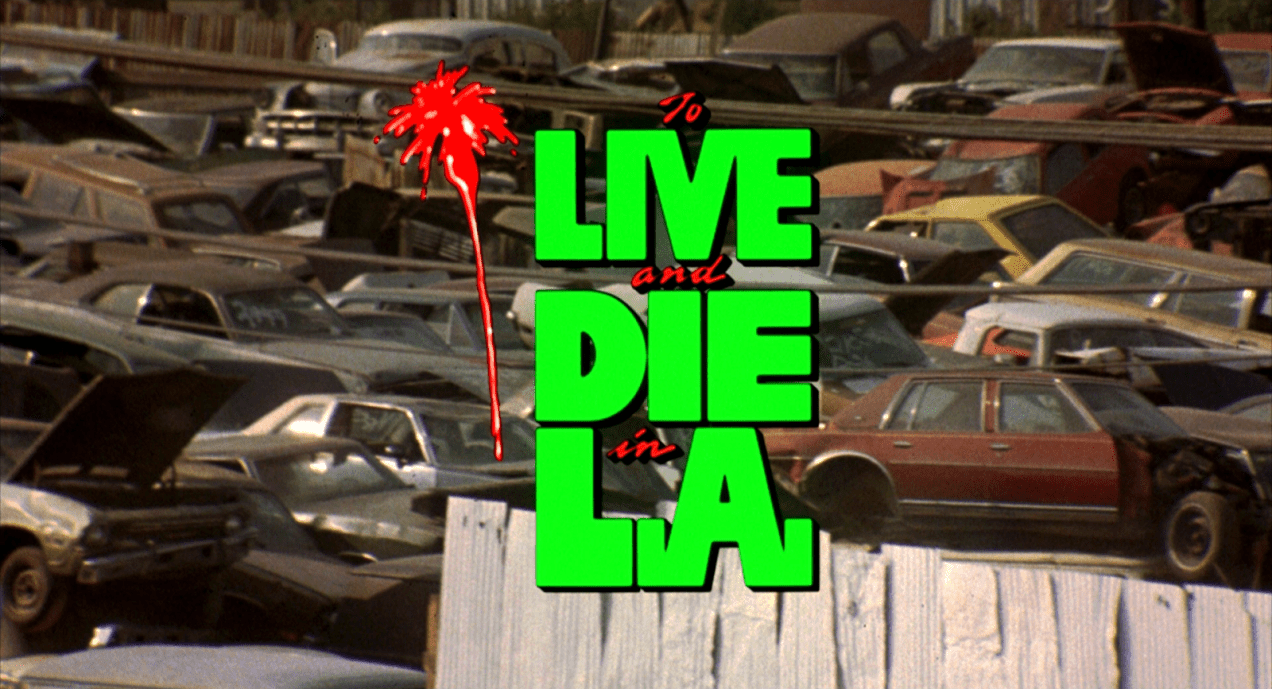A while back I watched and enjoyed William Friedkin’s The French Connection, and had seen, of his subsequent films, To Live & Die in LA come up a lot as other films I should watch, first just as Friedkin film in general, then in terms of crime films of the ’80s, and in terms of great films with Willam Defoe, then in terms of great movies with pop bands doing the score. So, eventually I decided that it was time to take this film off my watchlist, and onto my watched list.
It’s really hard to talk about this movie without making comparisons to another of Friedkin’s movies – The French Connection – and one of Michael Mann’s movies – Heat. All three are stories that focus on the criminals and the police (in this case Secret Service) who chase them, and show their parallels as driven, focused individuals, and the ways that their focus can lead to their undoing and self-destruction. In the case of this film and Heat, they also serve as something of a snapshot of Los Angeles at a particular time – not just the downtown area or the Spielbergian suburbs, but the industrial areas and warehouses.
Petersen & Defoe’s performances also carry the film really well. While my first exposure to Petersen was as the paternal Gil Grissom in CSI, I’ve also seen Manhunter, so I’ve also seen him play the sort of driven, borderline unhinged investigator before – however, the performance in To Live & Die In LA predates that, and Will Graham is a far more sympathetic character than Chance is. By contrast, Defoe’s Masters is definitely calculating and dangerous, but also shown as something of a more empathetic figure – he’ll kill you if you cross him, but that’s the rules of the world in which he works, for people who don’t he shows considerably more empathy.

This is all carried by an undercurrent of a score by Wang Chung – who I didn’t think of as this kind of band, necessarily (their exposure to their work was more party pop), but it works. It feels musically like this is the vibe that should lead to synth-wave, alongside Tangerine Dream’s score to Thief.
The series also has probably one of the best follow-ups to Friedkin’s own chase scene from The French Connection, going through the back streets and alleys of industrial LA, into the dry canals of LA River, and then into oncoming traffic on the freeway. It’s brilliantly shot and edited, with wonderful pacing that builds up a truly profound sense of paranoia (and which also could not work if set in the present day, if only because of the ubiquity of traffic cameras).
Because I watched the movie on a 4K-UHD release, I can speak to some of that as well – the transfer is well done, without any of the issues with over-removal of film-grain from other releases. The release also includes Friedkin’s audio commentary, which goes from the very insightful, like how he got William Peterson & Willam Defoe for the movie, to the highly questionable, such as crediting the film’s fight choreographer (who did do the Karate Kid) as also having choreographed Enter The Dragon, or claiming the dance choreographer was the first woman to perform in Kabuki theater in Japan.
Ultimately, I really liked this movie, and I think I’m going to need to have this and the 4K release of Heat & Collateral in my collection for a nice “Snapshots of Los Angeles through the lens of a crime thriller” collection.
To Live & Die In LA is available from Amazon (Affiliate Link).

